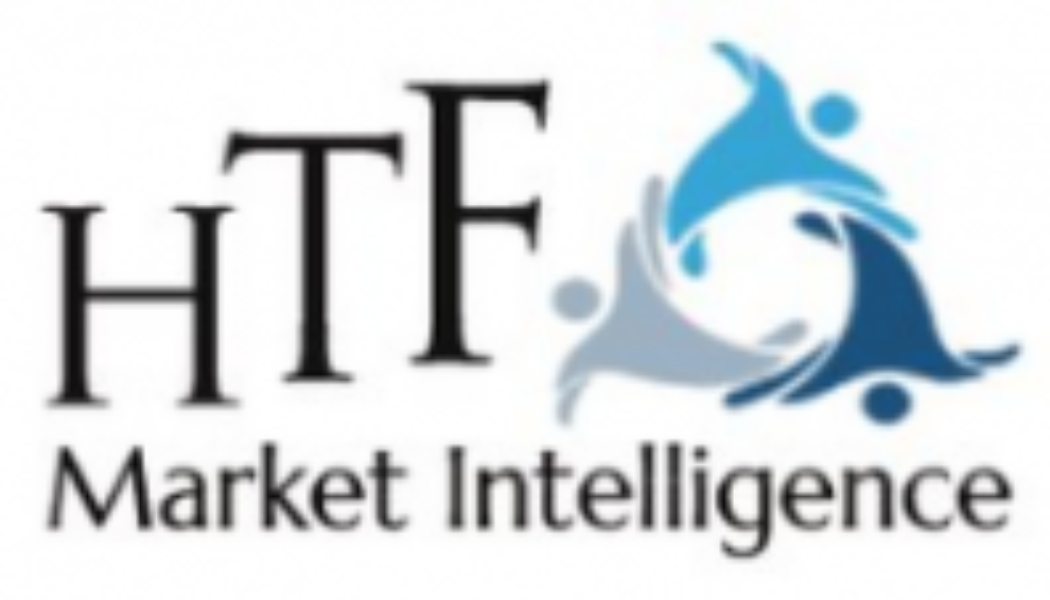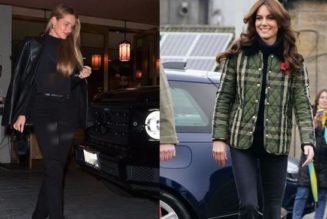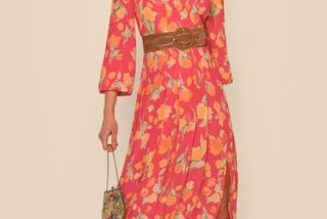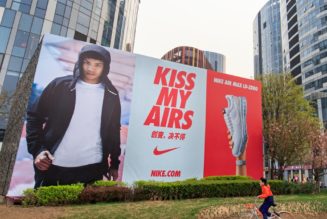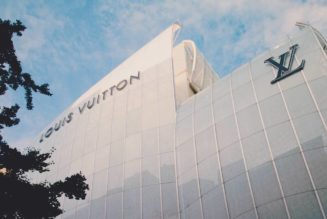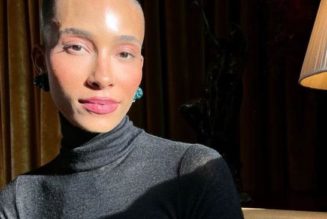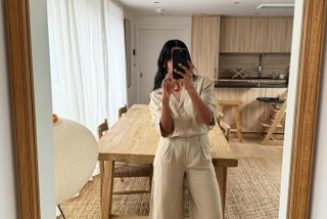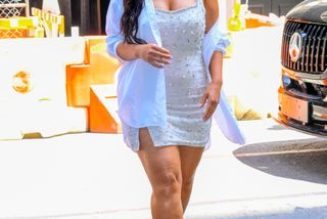The Luxury Fashion market size is estimated to increase by USD 155.4 Billion at a CAGR of 7.4% by 2030. The report includes historic market data from 2024 to 2030. The Current market value is pegged at USD 104.71 Billion.
According to HTF Market Intelligence, the Global Luxury Fashion market to witness a CAGR of 7.4% during the forecast period (2024-2030). The Latest Released Luxury Fashion Market Research assesses the future growth potential of the Luxury Fashion market and provides information and useful statistics on market structure and size.
This report aims to provide market intelligence and strategic insights to help decision-makers make sound investment decisions and identify potential gaps and growth opportunities. Additionally, the report identifies and analyses the changing dynamics and emerging trends along with the key drivers, challenges, opportunities and constraints in the Luxury Fashion market.
Curious about this latest version of the report? @ www.htfmarketintelligence.com/enquiry…ion-market
The Major Players Covered in this Report: LVMH Moët Hennessy Louis Vuitton SE (France), Kering SA (France), Richemont SA (Switzerland), The Estée Lauder Companies Inc. (United States), Compagnie Financière Richemont SA (Switzerland), Hermes International S.A.
(France), Burberry Group plc (United Kingdom), Prada S.p.A. (Italy), Chanel S.A. (France), Gucci (Italy).
Additionally, other players that are part of this detailed analysis are Versace (Italy), Ralph Lauren Corporation (United States), Tiffany & Co. (United States)
Definition:
The luxury fashion market refers to a segment of the fashion industry that offers high-end, premium-quality clothing, accessories, footwear, and other luxury products that are known for their exceptional design, craftsmanship, exclusivity, and brand prestige. Luxury fashion brands focus on creating products that cater to a discerning clientele seeking unique and elevated fashion experiences.
These brands often set trends, influence fashion aesthetics, and embody a lifestyle associated with luxury, elegance, and sophistication. Luxury fashion products are crafted with meticulous attention to detail, using the finest materials and skilled craftsmanship to ensure superior quality and durability.
Luxury fashion brands are known for their innovative and iconic designs that stand out from mainstream fashion trends, setting new standards for creativity and style.
Market Trends:
- Luxury fashion brands are increasingly focusing on sustainability, using eco-friendly materials, ethical sourcing, and transparent production processes to align with environmentally conscious consumers.
- The integration of technology in luxury fashion, such as virtual fashion shows, augmented reality (AR) try-ons, and immersive online shopping experiences, is becoming more prominent.
- The fusion of luxury and streetwear styles is a growing trend, appealing to younger consumers and blurring the lines between high fashion and everyday wear.
Market Drivers:
- The desire for status, prestige, and unique experiences drives consumers to invest in luxury fashion items as symbols of social status.
- Strong brand equity and heritage influence purchasing decisions, with consumers often seeking luxury brands for their reputation and craftsmanship.
- Millennials and Gen Z are becoming significant consumers of luxury fashion, driving shifts in design aesthetics and brand communication strategies.
Market Opportunities:
- The growth of e-commerce provides an opportunity for luxury brands to expand their online presence and tap into a global customer base.
- Tailoring experiences to individual preferences through customization, exclusive offers, and personalized recommendations can enhance customer loyalty.
- The luxury fashion market can capitalize on the rising affluence in emerging economies, particularly in Asia, where luxury consumption is on the rise.
Market Challenges:
- The luxury fashion market is competitive and saturated, making it challenging for brands to stand out and maintain their exclusivity.
- Counterfeit products undermine brand integrity and consumer trust, posing a challenge for luxury brands to protect their intellectual property.
- Rapid changes in consumer preferences and trends require luxury brands to remain agile and responsive to evolving tastes.
Market Restraints:
- Economic downturns can impact luxury spending, as consumers might prioritize essentials over discretionary luxury purchases.
- While there’s a growing demand for sustainable practices, the integration of such practices can pose challenges due to supply chain complexities and higher costs.
- Luxury brands must adhere to various regulations, including intellectual property laws, advertising standards, and ethical practices, which can restrict certain activities.
Order this Premium Report: @ www.htfmarketintelligence.com/buy-now…eport=5352
Customization of the Report: The report can be customized as per your needs for added data from up to 3 businesses or countries.
The titled segments and sub-sections of the market are illuminated below:
In-depth analysis of Luxury Fashion market segments by Types: Clothing & Apparel, Footwear, Accessories, Others
Detailed analysis of Luxury Fashion market segments by Applications: Store-Based, Non-Store Based
Major Key Players of the Market: LVMH Moët Hennessy Louis Vuitton SE (France), Kering SA (France), Richemont SA (Switzerland), The Estée Lauder Companies Inc. (United States), Compagnie Financière Richemont SA (Switzerland), Hermes International S.A.
(France), Burberry Group plc (United Kingdom), Prada S.p.A. (Italy), Chanel S.A. (France), Gucci (Italy).
Additionally, other players that are part of this detailed analysis are Versace (Italy), Ralph Lauren Corporation (United States), Tiffany & Co. (United States)
Geographically, the detailed analysis of consumption, revenue, market share, and growth rate of the following regions:
- The Middle East and Africa (South Africa, Saudi Arabia, UAE, Israel, Egypt,.)
- North America (United States, Mexico & Canada)
- South America (Brazil, Venezuela, Argentina, Ecuador, Peru, Colombia,.)
- Europe (Turkey, Spain, Turkey, Netherlands Denmark, Belgium, Switzerland, Germany, Russia UK, Italy, France,.)
- Asia-Pacific (Taiwan, Hong Kong, Singapore, Vietnam, China, Malaysia, Japan, Philippines, Korea, Thailand, India, Indonesia, and Australia).
Objectives of the Report:
- To carefully analyse and forecast the size of the Luxury Fashion market by value and volume.
- To estimate the market shares of major segments of the Luxury Fashion market.
- To showcase the development of the Luxury Fashion market in different parts of the world.
- To analyse and study micro-markets in terms of their contributions to the Luxury Fashion market, their prospects, and individual growth trends.
- To offer precise and useful details about factors affecting the growth of the Luxury Fashion market.
- To provide a meticulous assessment of crucial business strategies used by leading companies operating in the Luxury Fashion market, which include research and development, collaborations, agreements, partnerships, acquisitions, mergers, new developments, and product launches.
Global Luxury Fashion Market Breakdown by Type (Clothing & Apparel, Footwear, Accessories, Others) by Gender (Men, Women, Unisex) by End-User (Store-Based, Non-Store Based) and by Geography (North America, South America, Europe, Asia Pacific, MEA)
Download Sample Report PDF (Including Full TOC, Table & Figures) @ www.htfmarketintelligence.com/sample-…ion-market
Key takeaways from the Luxury Fashion market report:
- Detailed consideration of Luxury Fashion market-particular drivers, Trends, constraints, Restraints, Opportunities, and major micro markets.
- Comprehensive valuation of all prospects and threats in the
- In-depth study of industry strategies for growth of the Luxury Fashion market-leading players.
- Luxury Fashion market latest innovations and major procedures.
- Favourable dip inside Vigorous high-tech and market latest trends remarkable the Market.
- Conclusive study about the growth conspiracy of Luxury Fashion market for forthcoming years.
Major questions answered:
- What are influencing factors driving the demand for Luxury Fashion near future?
- What is the impact analysis of various factors in the Global Luxury Fashion market growth?
- What are the recent trends in the regional market and how successful they are?
- How feasible is Luxury Fashion market for long-term investment?
Get Detailed TOC and Overview of Report @ www.htfmarketintelligence.com/report/…ion-market
Major highlights from Table of Contents:
Luxury Fashion Market Study Coverage:
- It includes major manufacturers, emerging player’s growth story, and major business segments of Luxury Fashion Market – Global Trend and Outlook to 2030 market, years considered, and research objectives. Additionally, segmentation on the basis of the type of product, application, and technology.
- Luxury Fashion Market – Global Trend and Outlook to 2030 Market Executive Summary: It gives a summary of overall studies, growth rate, available market, competitive landscape, market drivers, trends, and issues, and macroscopic indicators.
- Luxury Fashion Market Production by Region Luxury Fashion Market Profile of Manufacturers-players are studied on the basis of SWOT, their products, production, value, financials, and other vital factors.
- Key Points Covered in Luxury Fashion Market Report:
- Luxury Fashion Overview, Definition and Classification Market drivers and barriers
- Luxury Fashion Market Competition by Manufacturers
- Luxury Fashion Capacity, Production, Revenue (Value) by Region (2024-2030)
- Luxury Fashion Supply (Production), Consumption, Export, Import by Region (2024-2030)
- Luxury Fashion Production, Revenue (Value), Price Trend by Type {Clothing & Apparel, Footwear, Accessories, Others}
- Luxury Fashion Market Analysis by Application {Store-Based, Non-Store Based}
- Luxury Fashion Manufacturers Profiles/Analysis Luxury Fashion Manufacturing Cost Analysis, Industrial/Supply Chain Analysis, Sourcing Strategy and Downstream Buyers, Marketing
- Strategy by Key Manufacturers/Players, Connected Distributors/Traders Standardization, Regulatory and collaborative initiatives, Industry road map and value chain Market Effect Factors Analysis.
Some of the important questions for stakeholders and business professionals for expanding their position in the Global Luxury Fashion Market:
Q 1. Which Region offers the most rewarding open doors for the market Ahead of 2024?
Q 2. What are the business threats and Impacts of the latest scenario over the market Growth and Estimation?
Q 3. What are probably the most encouraging, high-development scenarios for the Luxury Fashion movement showcased by applications, types, and regions?
Q 4. What segments grab the most noteworthy attention in Luxury Fashion Market in 2024 and beyond?
Q 5. Who are the significant players confronting and developing in Luxury Fashion Market?
Thanks for reading this article; you can also get individual chapter-wise sections or region-wise report versions like North America, MINT, BRICS, G7, Western / Eastern Europe, or Southeast Asia. Also, we can serve you with customized research services as HTF MI holds a database repository that includes public organizations and Millions of Privately held companies with expertise across various Industry domains.
News From
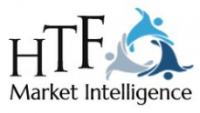 HTF Market Intelligence…
HTF Market Intelligence…Category: Industry Reports & Market Analysis Profile: HTF Market Report is wholly owned brand of HTF market Intelligence Consulting Private Limited which provides next-generation service for organizations with a deep focus on market intelligence, data analytics, and social intelligence, all uniquely delivered under one roof by skilled professionals. By combining and analyzing acquire lucid and most relevant data which would help in better decision-making. We provide your requirements with speed and cost benefit across the world, we are able to achi …
For more information:
